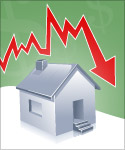The U.S. rental housing market has been a topic of much speculation and analysis, especially as we approach 2024. After a tumultuous period of rapid growth and subsequent cooling, experts are closely watching for signs of what the next phase might bring. Here's an exploration of the current state of the rental housing market and predictions for its trajectory in 2024.
Will the Rental Housing Boom Explode?
The rental market has experienced a rollercoaster ride in recent years, with significant fluctuations in demand and supply. In 2021 and early 2022, rents surged dramatically, but the trend reversed in 2023, with national year-over-year rent growth plummeting to negative figures. This shift indicates a market taking a breather after a period of intense activity.
Factors Influencing the Rental Housing Market
Several factors are contributing to the current state of the rental market:
- Supply and Demand Dynamics: A historic multifamily construction boom is underway, which is expected to continue into 2024. This increase in supply, coupled with softening demand, has led to a stabilization of rents.
- Economic Conditions: The broader economic landscape, including inflation rates and household formation trends, plays a crucial role in shaping the rental market. While inflation concerns persist, the market is adjusting to these economic pressures.
- Interest Rates: Mortgage rates and their impact on the housing market are also significant. As mortgage rates slowly decline from their 2023 highs, the market is likely to see gradual changes.
Predictions for 2024
Looking ahead to 2024, here are some key predictions for the rental housing market:
- Stabilization of Rents: Rents are expected to stabilize and more closely track inflation rates, with a mild annual decline in median asking rent projected.
- Increased Construction: New apartment construction is anticipated to reach its strongest year in decades, providing renters with more options and potentially better negotiation power.
- Moderate Rent Growth: Year-over-year rent growth is likely to emerge from negative territory, but it is not expected to exceed low single-digit percentages.
Implications for Renters and Investors
For renters, the potential increase in housing options and the stabilization of rents could mean more opportunities to find affordable housing and negotiate favorable lease terms. For investors and property owners, understanding these market dynamics is crucial for making informed decisions about property investments and management strategies.
What Would be the Implications for Renters?
The implications for renters in the U.S. rental housing market are multifaceted, reflecting a complex interplay of economic, demographic, and industry-specific factors. Here's an in-depth look at what renters might expect:
Affordability and Choice
With the anticipated increase in new apartment construction, renters may find themselves with more options to choose from. This could lead to a more competitive market for landlords, potentially resulting in more favorable rent prices for tenants. The increased supply may also help to alleviate some of the affordability issues that have plagued many urban areas, giving renters more leverage in negotiations.
Quality of Living
The growth in new construction is not just about quantity but also quality. As developers compete to attract tenants, we may see a rise in the standard of living with newer amenities, better designs, and more sustainable living environments becoming available.
Economic Factors
Renters will need to stay informed about broader economic conditions, such as inflation rates and employment trends, as these will directly impact their cost of living and ability to afford rent. While rents are expected to stabilize, personal incomes will need to keep pace with any changes in the cost of living.
Long-Term Planning
For those considering long-term leases, it's important to consider the potential for rent increases over time. While the market may be stabilizing, economic conditions can shift, affecting rent prices. Renters should be mindful of lease terms that allow for predictable rent increases and consider rent control regulations where applicable.
Location Flexibility
The shift in work culture towards remote and hybrid models has given many renters more flexibility in choosing where to live. This trend may continue to influence the rental market as individuals seek housing options outside of traditional urban centers, potentially leading to a redistribution of rental demand.
Tenant Rights and Advocacy
As the market adjusts, renters should be aware of their rights and any changes in tenant laws. Advocacy groups and resources can provide support and guidance, ensuring that renters are treated fairly and can make the most of the evolving market conditions.
Bottom Line: While the term “boom” may not accurately describe the expected state of the rental housing market in 2024, it is clear that the market is evolving. With new construction adding to the supply and economic factors influencing demand, the market is set for a period of adjustment and potential growth, albeit at a more moderate pace than in previous years.




